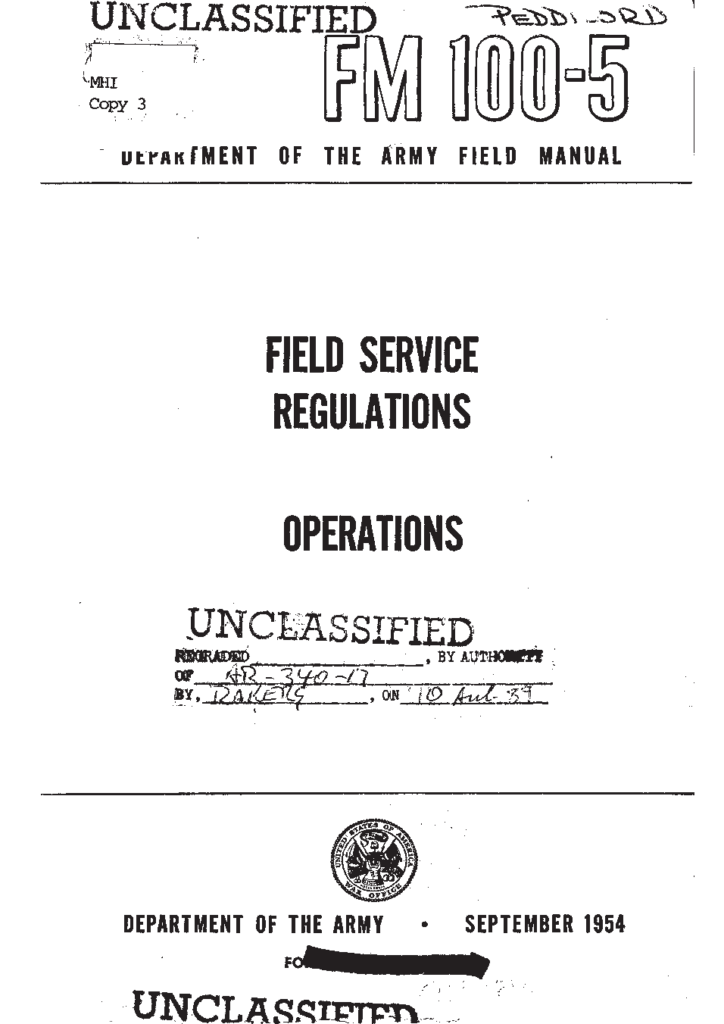 This list originated in response to a Twitter query discussing the history of post-World War II U.S. Army doctrine development. It is hardly exhaustive but it does include titles and resources that may not be widely known.
This list originated in response to a Twitter query discussing the history of post-World War II U.S. Army doctrine development. It is hardly exhaustive but it does include titles and resources that may not be widely known.
The first two are books:
Benjamin Jensen, Forging the Sword: Doctrinal Change in the U.S. Army (Stanford University Press, 2016)
Jensen focused on the institutional processes shaping the Army’s continual post-war World War II efforts to reform its doctrine in response to changes in the character of modern warfare.
Shimon Naveh, In Pursuit of Military Excellence: The Evolution of Operational Theory (Routledge, 1997)
In an excellent overview of the evolution of operational thought through the 20th century, Naveh devoted two chapters to the Army’s transition to Active Defense in the 70s and then to AirLand Battle in the 80s.
There are several interesting monographs that are available online:
Andrew J. Bacevich, The Pentomic Era: The U.S. Army Between Korea and Vietnam (NDU Press, 1986)
Paul Herbert, Deciding What Has to Be Done: General William E. DePuy and the 1976 Edition of FM 100-5, Operations (Combat Studies Institute, 1988)
John Romjue, From Active Defense to AirLand Battle: the Development of Army Doctrine 1973-1982 (TRADOC, 1984)
John Romjue, The Army of Excellence: The Development of the 1980s Army (TRADOC, 1997)
John Romjue, American Army Doctrine for the Post-Cold War (TRADOC, 1997)
A really useful place to browse is the Army Command and General Staff College’s online Skelton Combined Arms Research Library (CARL). It is loaded with old manuals and student papers and theses addressing a wide variety of topics related to the nuts and bolts of doctrine.
Another good place to browse is the Defense Technical Information Center (DTIC), which is a huge digital library of government sponsored research. I recommend searches on publications by the Army’s defunct operations research organizations: Operations Research Office (ORO), Research Analysis Corporation (RAC), and the Special Operations Research Office (SORO). The Combat Operations Research Group (CORG), particularly a series of studies of Army force structure from squads to theater HQ’s by Virgil Ney. There is much more to find in DTIC.
Two other excellent places to browse for material on doctrine are the Combat Studies Institute Press publications on CARL and the U.S. Army Center of Military History’s publications.
Some journals with useful research include the Journal of Cold War Studies and the Journal of Strategic Studies.
If anyone else has suggestions, let me know.

I totally agree, and echo Shawn’s recommendations. The Combat Studies Institute Press publications on CARL and the U.S. Army Center of Military History’s publications are excellent places to internet browse for material on doctrine, after action reports and the history red and green books, given I am on the other side of the pond.
I have researched, the debate regarding the up gunning of the Sherman against the production of Pershing, which was fascinating. CARL was excellent, with copies of the after action reports, original manuals for the operation of the M4, tank and tank destroyer doctrine. The after action reports are fascinating to see how the units applied doctrine to overcome various situations.
Units overcome various situations by either dying more, or if improvements of any sort occur, less.